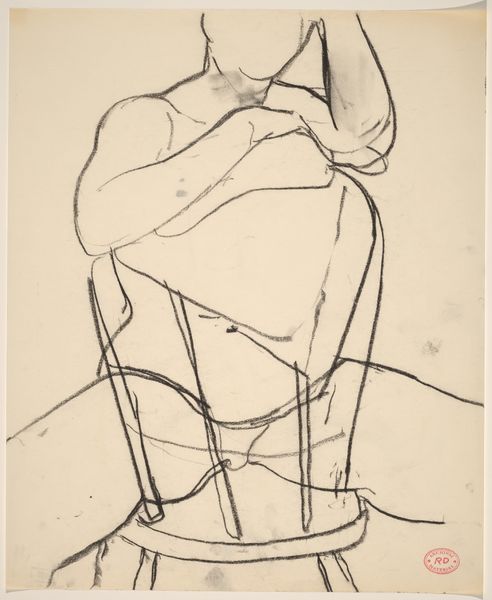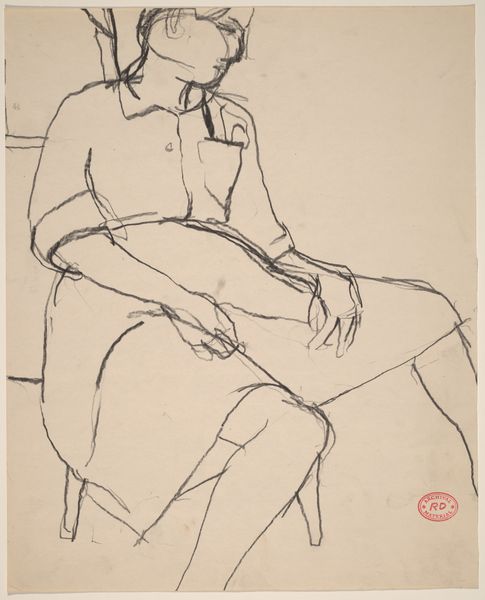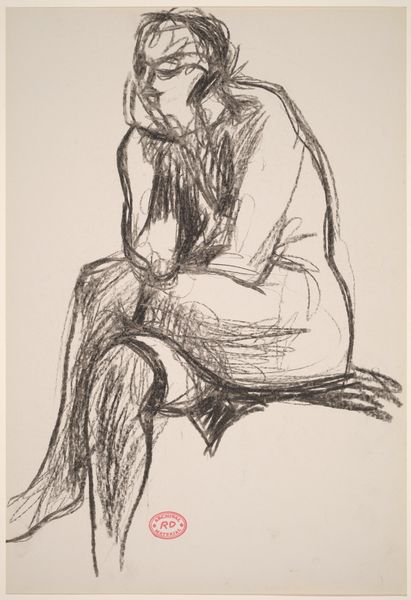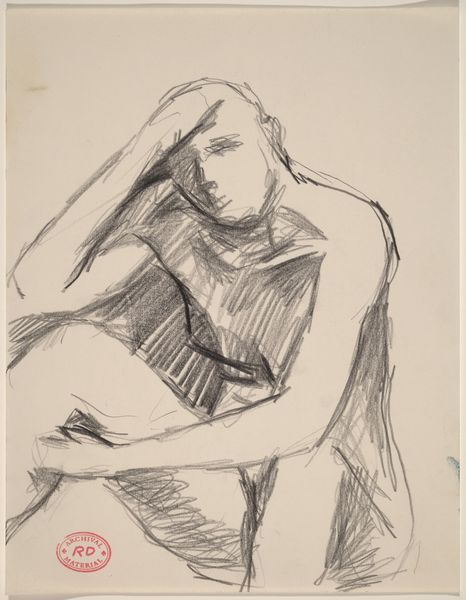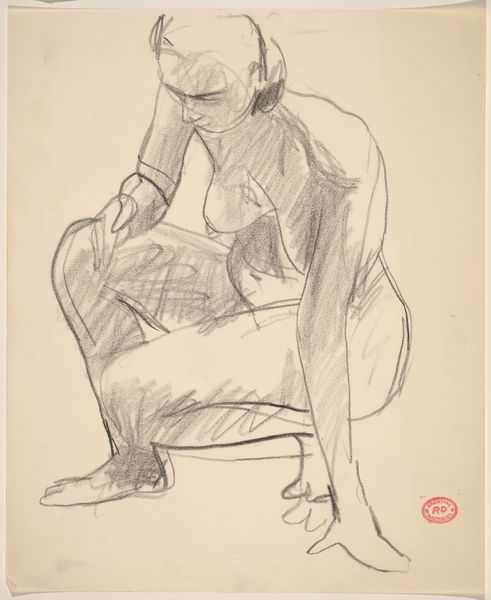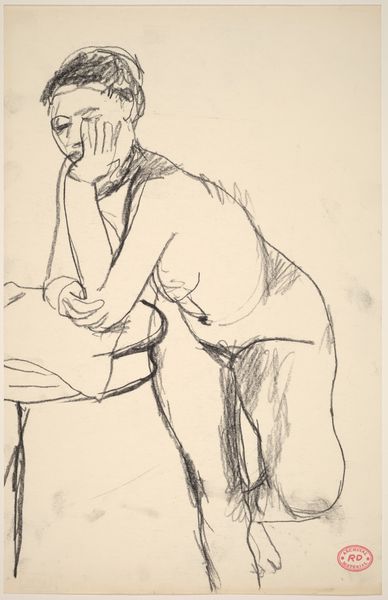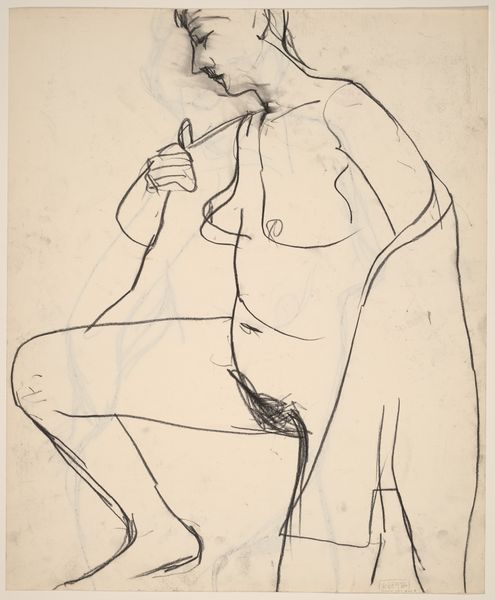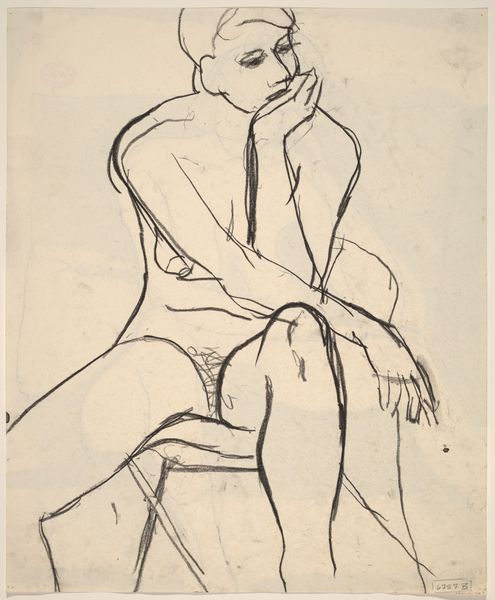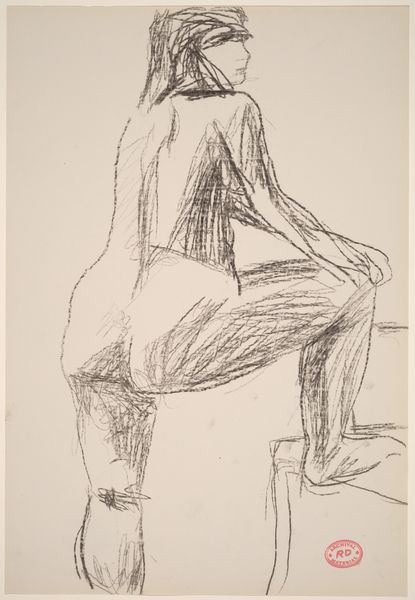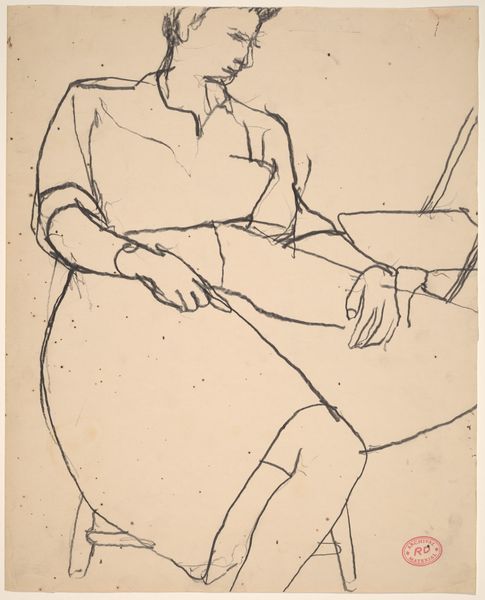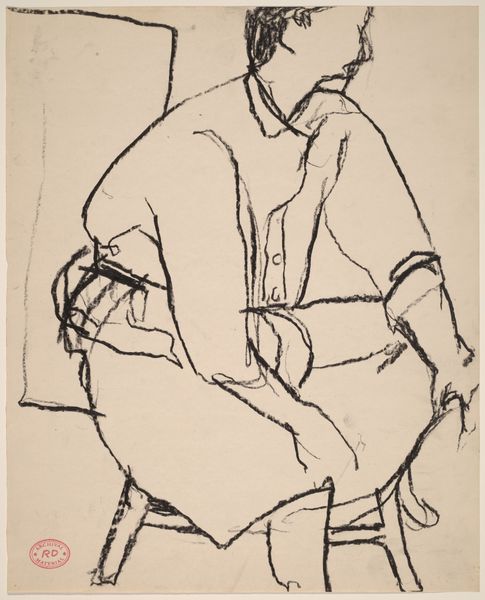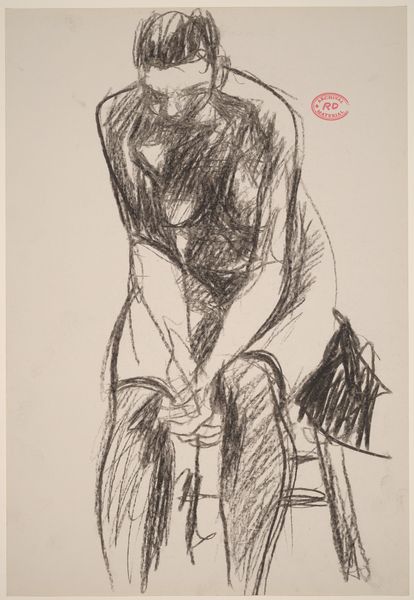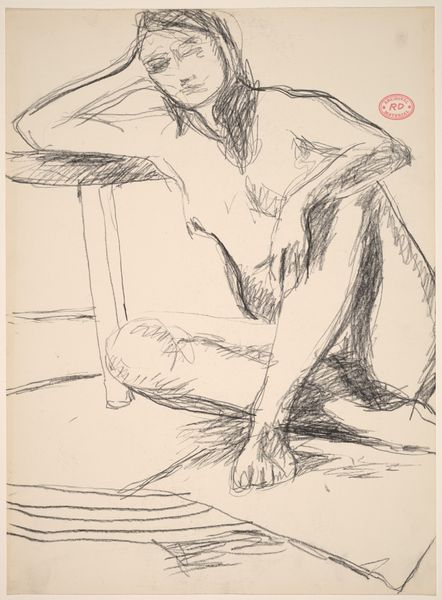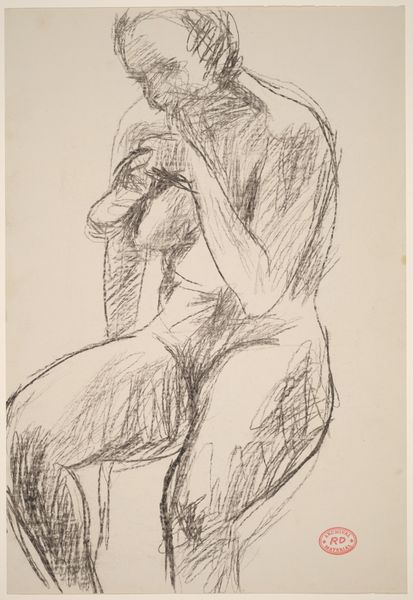![Untitled [seated figure with head in hands] by Richard Diebenkorn](/_next/image?url=https%3A%2F%2Fd2w8kbdekdi1gv.cloudfront.net%2FeyJidWNrZXQiOiAiYXJ0ZXJhLWltYWdlcy1idWNrZXQiLCAia2V5IjogImFydHdvcmtzLzNkNTQ4MDUxLTQ5ZmMtNDNmMy04Y2RmLTBhNTZlZTU3NjlmZS8zZDU0ODA1MS00OWZjLTQzZjMtOGNkZi0wYTU2ZWU1NzY5ZmVfZnVsbC5qcGciLCAiZWRpdHMiOiB7InJlc2l6ZSI6IHsid2lkdGgiOiAxOTIwLCAiaGVpZ2h0IjogMTkyMCwgImZpdCI6ICJpbnNpZGUifX19&w=3840&q=75)
drawing, pencil
#
portrait
#
drawing
#
figuration
#
bay-area-figurative-movement
#
pencil
Dimensions: overall: 27.9 x 21.6 cm (11 x 8 1/2 in.)
Copyright: National Gallery of Art: CC0 1.0
Curator: We are looking at an “Untitled [seated figure with head in hands]” pencil drawing executed by Richard Diebenkorn sometime between 1955 and 1967. What is your initial take? Editor: Stark and forlorn. The severe lines create a claustrophobic sensation, like being trapped within the subject’s despair. There is no comfort, just jagged edges. Curator: The gestural quality really highlights Diebenkorn’s fascination with capturing emotional states. Consider how, during the post-war period, artists wrestled with conveying human vulnerability amidst pervasive anxieties. It’s interesting he was drawn to figurative works at a time when the abstract expressionism was in full bloom. Editor: I’m struck by how he uses shading to imply volume but simultaneously flattens the composition. See how the head almost merges with the background? Curator: Yes! The merging contributes to this generalized feeling of isolation and reflects the increasing sense of alienation pervasive in American society at the time, partly due to Cold War anxieties and cultural shifts challenging traditional values. This tension is almost a social portrait of existential distress. Editor: Looking at how his cross-hatching lacks precision, there are so many stray marks and sketchy lines, yet they precisely build the shape and tension. You can sense his rapid hand. He captures the subject in a vulnerable moment, in transit between despair and resolution perhaps. Curator: Diebenkorn walked a tightrope, moving fluidly between abstraction and representation. We have to remember that museums at this time struggled with their identities—either focusing on classic pieces or adapting to a wave of modern and contemporary pieces. Editor: Ultimately, for me, the formal rigor transcends its immediate context. That interplay between form and feeling ensures it continues to resonate. It's less about historical events and more about universal human conditions. Curator: A powerful observation! Viewing it through that lens allows a more profound connection, as Diebenkorn invites us to explore universal dimensions of solitude.
Comments
No comments
Be the first to comment and join the conversation on the ultimate creative platform.
